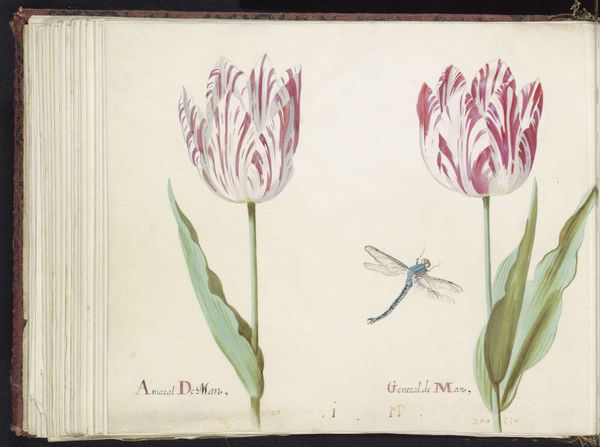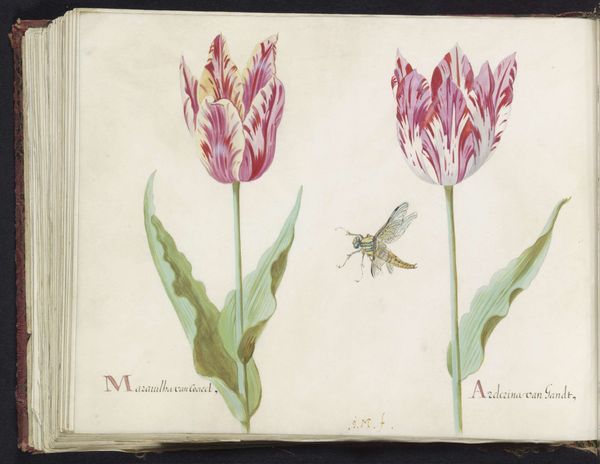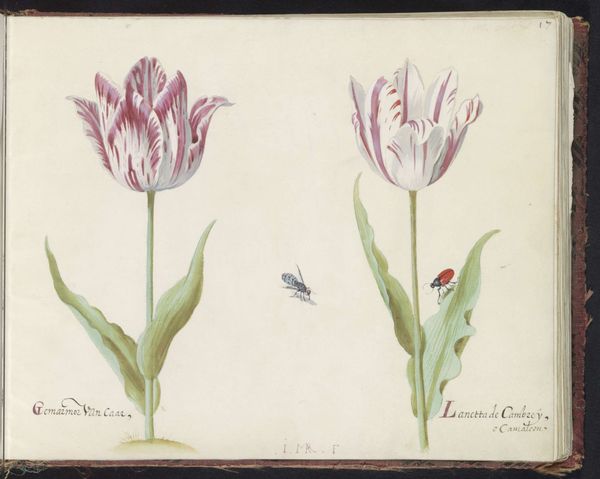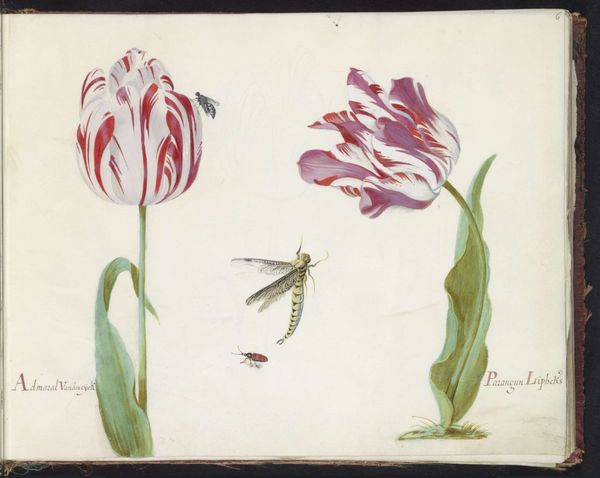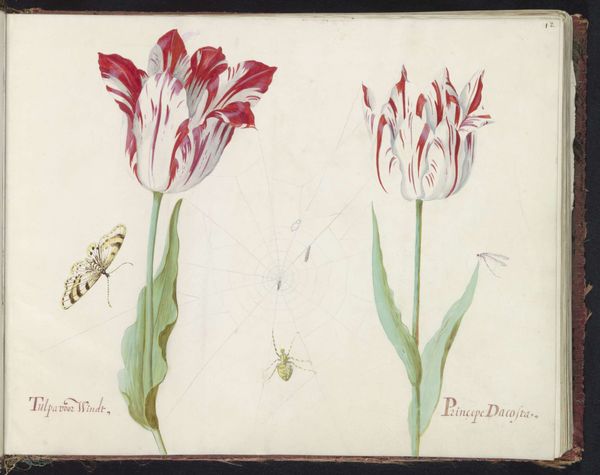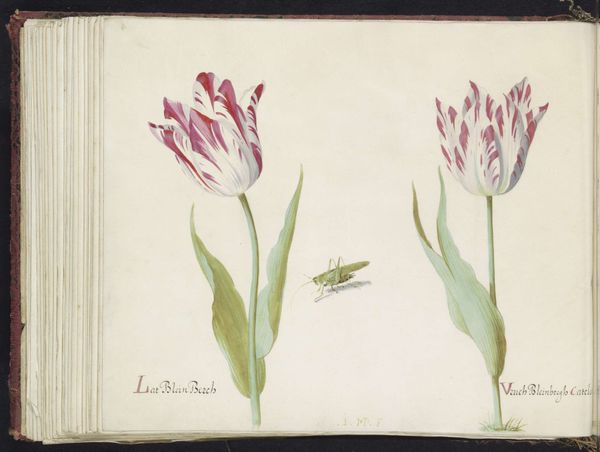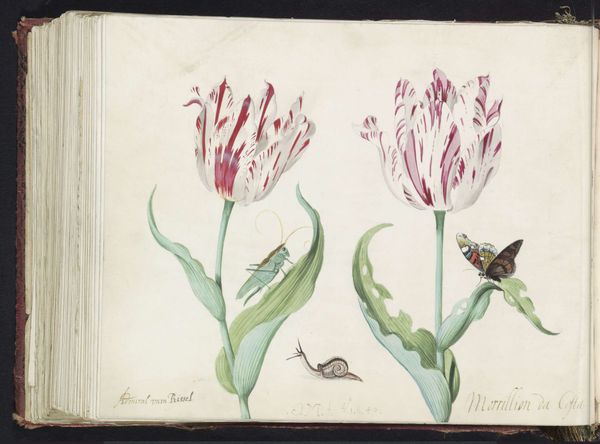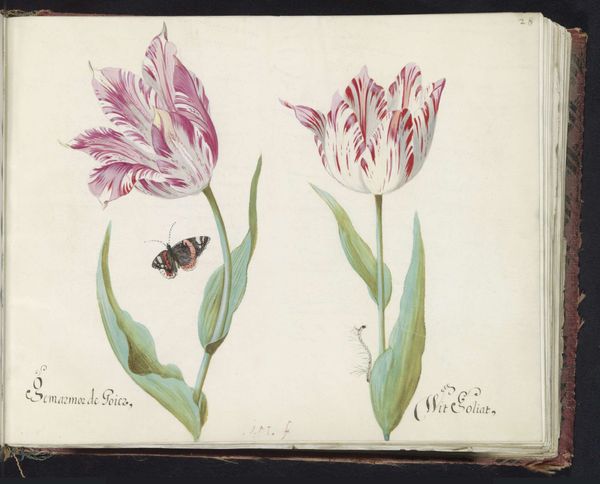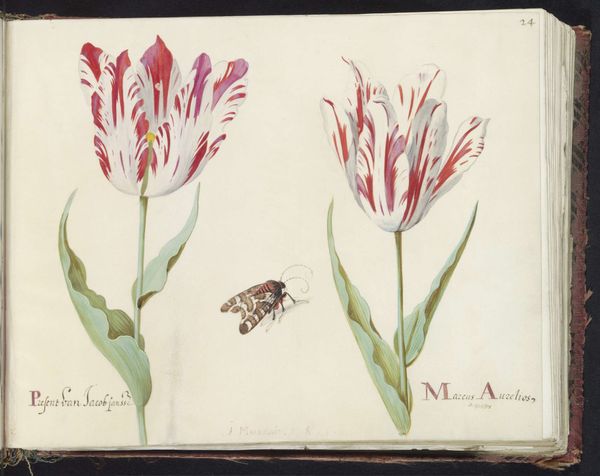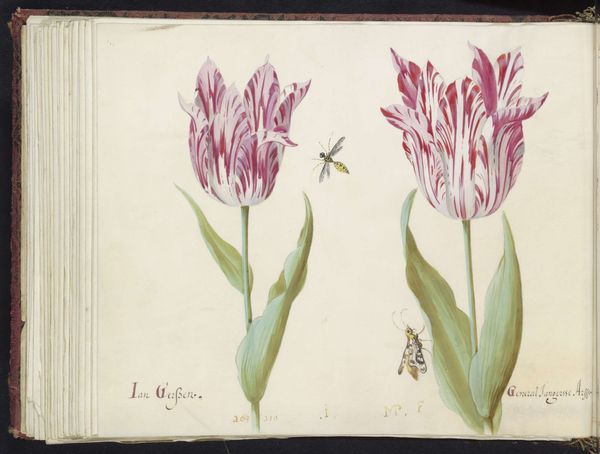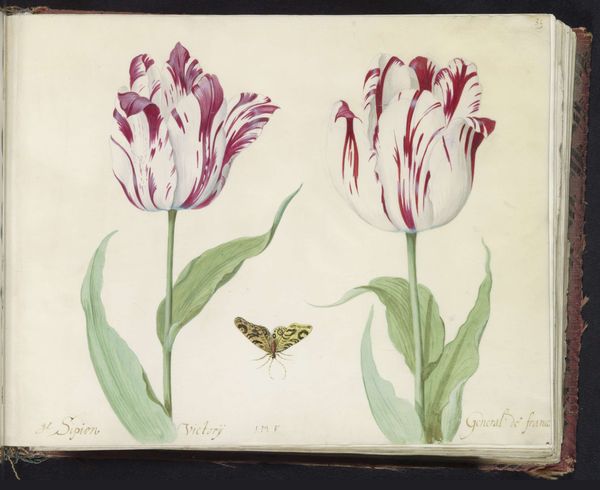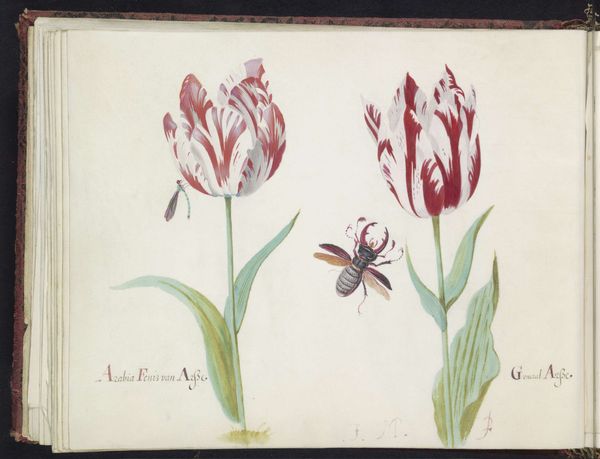
painting, watercolor
#
dutch-golden-age
#
painting
#
watercolor
#
watercolour illustration
#
botanical art
#
watercolor
#
realism
Dimensions: height 265 mm, width 335 mm
Copyright: Rijks Museum: Open Domain
Jacob Marrel rendered these two tulips with watercolor and gouache sometime in the 17th century. During the Dutch Golden Age, the tulip wasn't just a flower; it was a symbol of status, a commodity in a speculative market, and a reflection of the era's intense engagement with the natural world. Marrel, born in Germany but active in the Netherlands, straddled different worlds, much like the hybrid tulips he depicted. These weren't your average blooms. Their variegated patterns spoke of luxury and desire, fueled by the infamous "Tulip Mania." The insects flitting around add an element of realism, but they also hint at the fragility of beauty and wealth. This image serves as a reminder of how deeply intertwined art, commerce, and our relationship with nature can be. It captures a moment when a flower could spark both euphoria and ruin, a mirror reflecting the complex values of a society in full bloom.
Comments
No comments
Be the first to comment and join the conversation on the ultimate creative platform.
